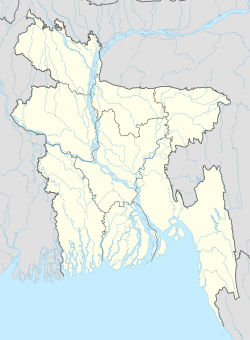Manikganj মানিকগঞ্জ | |
|---|---|
 Darul Uloom Manikganj | |
| Coordinates: 23°51′N90°01′E / 23.850°N 90.017°E | |
| Country | |
| Division | Dhaka |
| District | Manikganj |
| Upazila | Manikganj Sadar |
| Named after | Maharaja Manik Ram Basu [1] Sufi saint Manik Sha |
| Government | |
| • Type | Mayor–Council |
| • Body | Manikganj Municipal Corporation |
| Area | |
• Total | 2.28 km2 (0.88 sq mi) |
| Population | |
• Total | 71,698 |
| • Density | 31,400/km2 (81,400/sq mi) |
| Time zone | UTC+6 (Bangladesh Time) |
| National Dialing Code | +880 |
Manikganj is a town situated in Dhaka Division, Bangladesh. It serves as the administrative centre of both Manikganj District and Manikganj Sadar Upazila. Noted for its relatively low levels of pollution, the town has experienced recent urban development, including the construction of a highway linking Dhaka with Singair Upazila, thereby enhancing regional connectivity and transportation infrastructure. The Padma River flows adjacent to the district, contributing to its ecological diversity and supporting a range of local flora and fauna. Manikganj plays a strategic role in inter-regional connectivity, linking the north-western and south-western parts of Bangladesh via the Paturia and Aricha ferry terminals.
Contents
The area is locally renowned for the production of molasses, particularly from the village of Jhitka, and features several cultural and historical landmarks. Among these, the Baliati Zamindari Palace stands out as a prominent tourist attraction, reflecting the architectural heritage of the region. [2]






